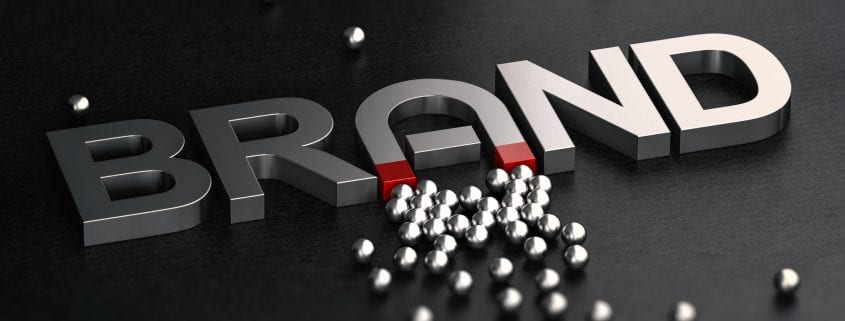
4 Essential Brand Components
There’s a common misconception that many people have that a “brand” is basically just the name of the company and the logo that they use. While these elements contribute to the overall brand of a business, the term “brand” is actually much more comprehensive than that. It involves many different components, which is why it takes a lot of thought in order to successfully develop your brand. The following are the four main brand components that you will need to address when building your brand and what kinds of strategies you can put into place to further develop those components.
1. Brand Identity
Your brand identity is how you want your brand to be perceived. It’s important that you know what your brand identity is and what you want it to be. If you don’t, how is anyone else supposed to know? You’re going to have a tough time generating brand awareness if you lack a strong brand identity. The following are a few steps that you should take to establish your brand identity:
-
Identify your mission
What was the reason you established your company in the first place? What is your company’s goal? Consumers want to know what your mission is (and they don’t want to hear that it’s “to make a profit”) and it will reflect who you are as a company.
-
Establish your unique value proposition
Your unique value proposition is what sets you apart from your competitors. It’s a statement of how your offer benefits your customers, how you will meet the needs of your customers, and what makes your offer unique. Every marketing campaign you run should align with your unique value proposition.
-
Create your brand’s visual identity
The visual elements of your brand certainly factor into your brand identity. Just consider the logos and color palettes of some of the biggest companies out there, from Facebook’s simple logo and use of blue to McDonald’s golden arch and yellow and red palette. A strong logo that’s instantly recognizable is important, but so is choosing your colors. Different colors have different meanings and the colors you choose can have a psychological impact on your audience as well. For example, many fast-food restaurants use red and yellow because that combination of colors is thought to stimulate the appetite. Just keep in mind that consistency is key. If you decide to use shades of blue in your logo and on your website, then you should use those same colors for your social media pages, email newsletters, and physical location as well.
-
Increase brand recognition
It’s going to take some time to get your vision of your brand identity out to the masses. You’ll want to generate awareness of your brand to do this through a variety of marketing efforts, such as building a website that emphasizes your mission and unique value proposition, creating content that’s optimized for SEO, using social media to engage with consumers and to post your content, and more. It’s also vital that you make sure your mission, unique value proposition, and visual identity are consistent across all platforms. If it’s not, it will end up hurting your brand identity.
2. Brand Image
Your brand image is similar to your brand identity in that it deals with how your brand is perceived. However, whereas your brand identity is how you want your brand to be perceived, brand image is how your brand is actually perceived. Consider your brand image as the reputation you currently have with the general public. Take for example United Airlines. Not long ago, they updated their brand design in an attempt to strengthen their brand identity as a “thoughtful, modern, and innovative airline.” However, their brand identity and brand image are currently quite different from each other after numerous massive PR failures regarding their customer service. Keeping that in mind, the following are a few ways to build and maintain a positive brand image:
-
Spread your message via PR
Use public relations to spread your key messages as well as relevant news concerning your company. You can do this through news outlets, trade publications, and even online blogs. Public relations will help you raise awareness of your brand and what you’re doing, thereby helping to improve your brand image.
-
Establish a social presence
Social media is an incredibly effective way to build your brand image, whether it’s by sharing content with consumers, keeping consumers up to date on the latest news and product launches, spreading awareness of your message, and engaging with consumers on a personal level. In fact, you can even use social media to address negative comments. It’s a good way to repair potential damage done to your brand image as a result of a poor customer experience by showing that you care and trying to correct the situation.
-
Create high-quality content
Content will help to increase brand awareness by bringing in more web traffic. However, it can also help to build your brand authority. By publishing content that is relevant to your company and to your audience (and that’s of high quality), you’ll become a trustworthy source of information, which — in turn — will help improve your reputation and increase brand trust.
3. Brand Culture
Brand culture refers to your company’s core values and how you set an example for those values. Businesses have always
emphasized certain values; however, those values were often things like “reliability” or “honesty.” Values that are more equivalent to basic ethics. While those are important values to hold onto, more and more businesses have begun taking moral stances as well as political stances in addition to generally accepted values. These types of values feed into your brand culture as well. Take Nike for example. They have taken strong social positions by running commercials backing Colin Kaepernick and recently touting the importance of the women’s U.S. soccer team’s World Cup win. These are branding efforts touting their championing of equality, which has become a part of their brand culture. The following are a few tips to help you establish your brand culture:
-
Define your values
Define exactly what your values are and how your company lives out those values. Don’t be afraid of taking a stance if there’s a particular stance that you want to take. Using the Nike example again, their backing of Kaepernick was considered controversial and plenty of consumers did not agree with their position. However, those that did agree with their position became even more strongly aligned with Nike’s brand. You can’t please everyone, but by sticking to your values, you’ll be more likely to strengthen your relationship with many of your customers.
-
Spread awareness of your values
Let consumers know about your values by declaring them on your website or by encouraging discussion about your values on social media. Publishing content that backs your values is an effective method as well.
-
Ensure that your company reflects your values
There’s nothing consumers hate more than a hypocrite. If you’re flaunting your support for equal pay across social media and in your marketing efforts, then you better be practicing what you preach. Your brand culture is incredibly dependent on your ability to embrace your own values within your company.
4. Brand Personality
Your brand personality refers to the human characteristics that your company has. Developing a brand personality is vital to connecting with your audience on an emotional level and for making your brand relatable. Because of this, make sure that you use the following tips to develop your brand personality:
-
Learn who your audience is
Understanding your audience is something that you need to do from the very beginning. It’s an important step in building your brand identity as well. However, it’s particularly important when it comes to developing your brand personality. The way you present yourself and the way that you communicate should reflect not only who the audience is but what they expect. For example, if you have a younger audience, then a dry, formal tone may not resonate with them. However, if your audience is older, using younger slang and current pop culture references may go over their heads.
-
Engage with your audience
While you can get your personality across in the content you write, it’s easier to do through engaging with people. It’s why using social media is so important. Your entire audience sees your interactions and it helps establish your personality a certain way. For example, Wendy’s has a reputation for having a playful personality because of their use of humor and the pretend feuds that they get into with other brands on Twitter.
-
Be consistent in tone
If you’re going to be funny and informal on one platform, you need to make sure that personality carries over to all of the other platforms you use, both online and offline. If you’re inconsistent, it will hurt your ability to develop a cohesive brand personality, which will only confuse your audience.
These are the four main brand components that you will need to address when developing your brand strategy. A strong brand requires a strong brand identity, brand image, brand culture, and brand personality. Implementing a successful brand strategy that develops all four of these components increases brand trust, loyalty, and awareness.

Dan Gartlan helps companies of all kinds drive their business initiatives and achieve their goals with strategic marketing programs that deliver results. As President of Stevens & Tate Marketing, he has over 20 years experience across various industries, and continues to share his expertise to build brands nationwide.





